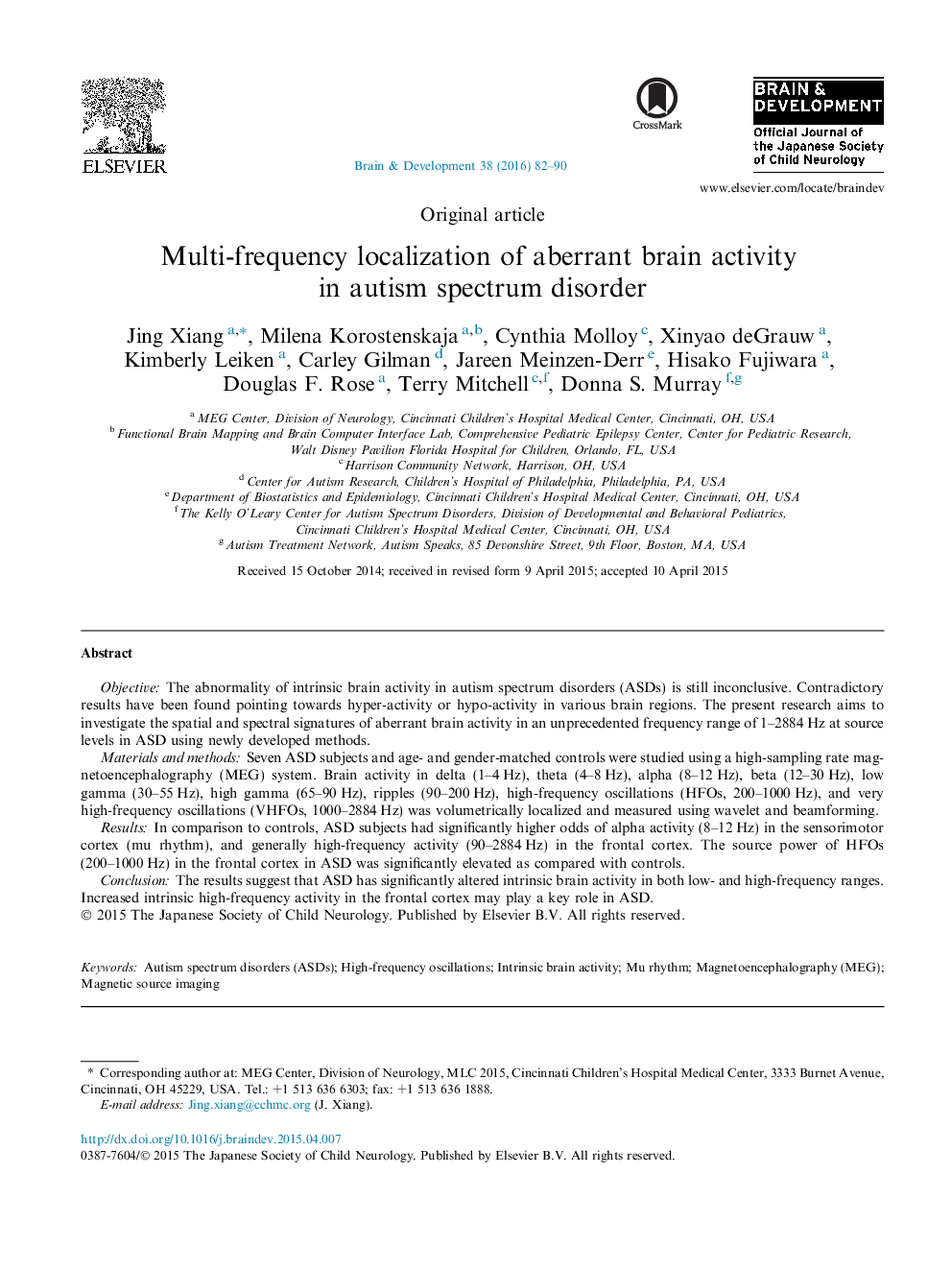| Article ID | Journal | Published Year | Pages | File Type |
|---|---|---|---|---|
| 3036747 | Brain and Development | 2016 | 9 Pages |
ObjectiveThe abnormality of intrinsic brain activity in autism spectrum disorders (ASDs) is still inconclusive. Contradictory results have been found pointing towards hyper-activity or hypo-activity in various brain regions. The present research aims to investigate the spatial and spectral signatures of aberrant brain activity in an unprecedented frequency range of 1–2884 Hz at source levels in ASD using newly developed methods.Materials and methodsSeven ASD subjects and age- and gender-matched controls were studied using a high-sampling rate magnetoencephalography (MEG) system. Brain activity in delta (1–4 Hz), theta (4–8 Hz), alpha (8–12 Hz), beta (12–30 Hz), low gamma (30–55 Hz), high gamma (65–90 Hz), ripples (90–200 Hz), high-frequency oscillations (HFOs, 200–1000 Hz), and very high-frequency oscillations (VHFOs, 1000–2884 Hz) was volumetrically localized and measured using wavelet and beamforming.ResultsIn comparison to controls, ASD subjects had significantly higher odds of alpha activity (8–12 Hz) in the sensorimotor cortex (mu rhythm), and generally high-frequency activity (90–2884 Hz) in the frontal cortex. The source power of HFOs (200–1000 Hz) in the frontal cortex in ASD was significantly elevated as compared with controls.ConclusionThe results suggest that ASD has significantly altered intrinsic brain activity in both low- and high-frequency ranges. Increased intrinsic high-frequency activity in the frontal cortex may play a key role in ASD.
